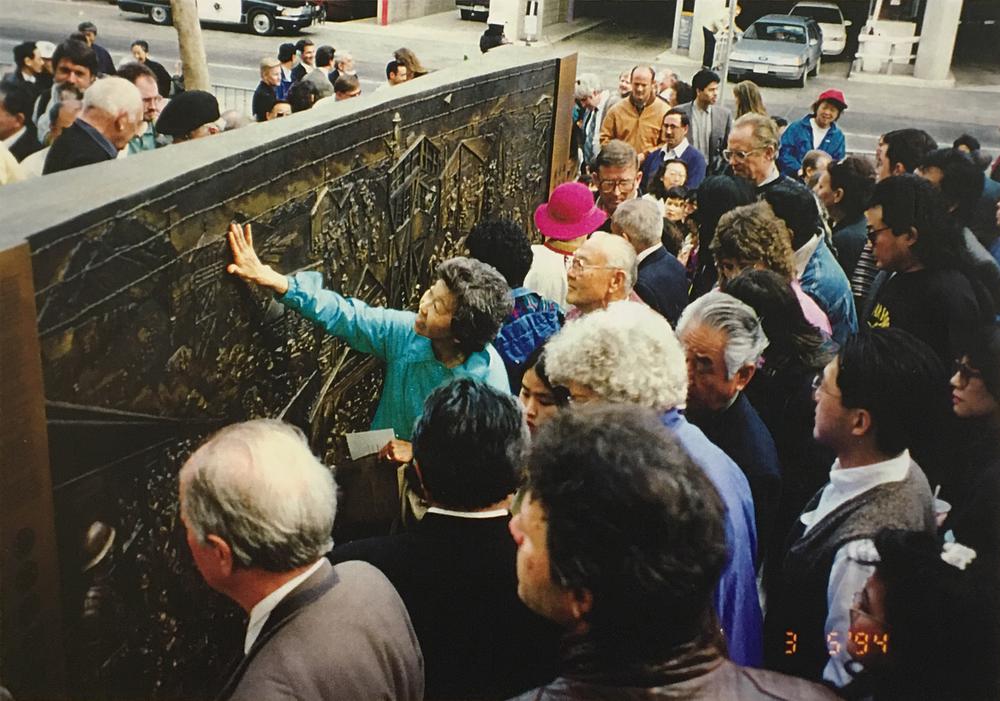Ruth Asawa. Japanese American Incarceration

Ruth Asawa was active in arts education and civic arts initiatives throughout her career, making several prominent public art pieces including the Japanese American Internment Memorial (1985–94) in San José. Asawa, with her family, had been imprisoned in 1942 at a camp in Rohwer, Arkansas.1 She designed a narrative monument with figurative imagery to depict the history of the Japanese American community in California before incarceration —stories of immigration, agriculture, small business, and culture—as well as experiences in the camps.2 On each end of the monument, pictorial scenes are framed by symbolic mon, or family crests that Asawa collected from 177 Japanese American families in San José. Cast in two large bronze panels, it stands as a five-by-fourteen-foot double-sided monument in front of the Federal Building in downtown San José.